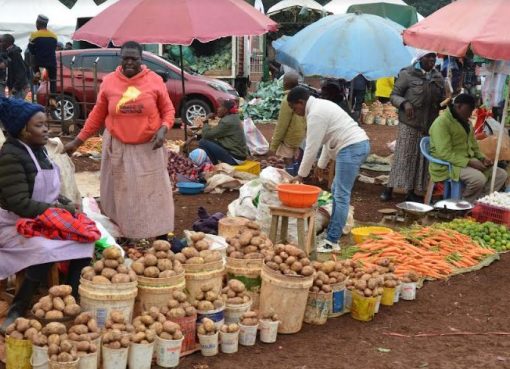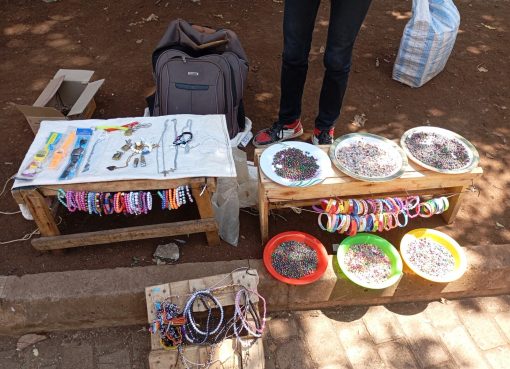Construction of Shimoni fishing port in Kwale County begins next week as the national government turns its focus on the exploitation and conservation of the blue economy for growth.
The government through Kenya Ports Authority (KPA) seeks to upgrade the Shimoni fish landing site into a modern fishing facility to reap benefits of the blue economy.
The fish port will be equipped with facilities such as breakwater, landing quays, refrigeration and processing facilities, slipway by which ships or boats can be moved to and from the water and related facilities.
The upgrading of the Sh500 million fish landing site into a modern fishing port complete with cold storage facilities, new modern offices for the various state agencies and berths for medium-sized fishing vessels would take eight months to complete.
The development of the project expected to take shape at unparalleled speed has garnered the support of residents, conservationists and political leaders led by Governor Salim Mvurya.
Mvurya said the development of the port project in the medieval fishing village of Shimoni will be a game-changer to the economies of the coastal counties of Kwale, Mombasa, Kilifi and Lamu and expressed optimism on the success of the project.
The county boss said they are working in collaboration with KPA to develop Shimoni whose population relies on fishing into a commercial and tourist port.
He said the site will help maintain a hygienic environment for the processing and handling of fish while preventing postharvest losses for the fishermen.
KPA is responsible for the port of Mombasa and small coastal ports such as Funzi, Shimoni and Vanga located in the south coast, Mtwapa, Kilifi, Malindi, Lamu and Kiunga.
Shimoni port project implementation team under the leadership of Kwale County Commissioner (CC) Karuku Ngumo held its inaugural meeting in Shimoni to commence the preparations for the construction of Shimoni fishing port.
The CC said the port project multi-agency implementation team will oversee the construction and asked the concerned agencies to kick off the project as quickly as possible.
Ngumo said the multi-agency team is determined to expedite the much-awaited project to ensure its completion within the stipulated time as per the recent directive given by President Uhuru Kenyatta.
The announcement by the head of state that the projects kicks off in September and be ready for use by April 2020 has elicited excitement among the island dwellers and stakeholders in the shipping industry contending it will transform economic fortunes.
The county commissioner urged for collaboration between various state agencies involved in the project to be executed by KPA to ensure its successful completion.
Other agencies in the project implementation team include the Kenya Revenue Authority (KRA), Kenya Bureau of Standards (KEBS), National Museums of Kenya (NMK), Kenya Wildlife Service (KWS), National Youth Service, Immigration and the Department of Fisheries.
He said the government is aware that the sustainable development of ocean resources are key to prosperity in the coastal region.
He stated the blue economy concept encompasses fisheries, maritime biotechnology, aquaculture, tourism, and marine transport and logistics.
“Blue economy is the next frontier of economic development in the coastal county of Kwale after the tourism sector,” he said.
NMK, the state corporation that manages museums, sites and monuments has underscored the need to carry out a heritage impact assessment to protect the historic built environment in the vicinity of the fishing village.
NMK senior curator Patrick Abungu said Shimoni boasts of an impressive collection of heritage structure such as British colonial ruins and slave caves which are the focus of attraction for tourists and researchers.
“There is nothing inherently wrong with the idea of the modern fish port but our worry is that it’s going to be adjacent to a seafront heritage site with historical significance,” said Abungu.
The curator said a comprehensive heritage assessment is necessary to preserve all heritage sites in the country for posterity.
William Tenay Head of Project Development and Management at KPA said constructors will be working round the clock to deliver the project within the given timeframe and in accordance to ‘our specifications and engineering standards.’
He said the present port is at a distance of about four kilometers along the access channel to the open sea and the area is secure for navigation and fishing activities.
Engineer Tenay clarified that KPA is not currently undertaking the construction of the Sh20 billion Shimoni port as having been reported in sections of the media.
“The Sh20 billion Shimoni industrial port is a long term plan by KPA and it is still in the pipeline but what we are embarking on now is modernizing the old fishing harbour that handles artisanal fishing,” he said.
Karim Hassan Ali a blue economy specialist lauded the government for identifying the marine sector as an industry where the country can be a leading authority with potential for increased fishing value creation.
“Research and infrastructure development in the fishing industry will be essential in order to tap into the huge potential in the blue economy,” he said.
It is estimated that the blue economy if properly harnessed has the potential to create over 52,000 jobs in the next ten years besides having the capacity to inject Sh470 billion into the economy.
In the past KPA commissioned the Rotterdam based Maritime and Transport Solutions (MTBS) which undertook a master plan study for small ports that identified potentials for the scheduled ports along the coastline.
Shimoni fishing village near the border with Tanzania was identified as the most viable and had the highest potential for development.
The feasibility study conducted in 2017 identified the border village as suitable for the development and implementation of a local offshore fish port with a capacity of 50,000 metric tons annually.
According to KPA, Shimoni with current volumes of approximately 10,000 metric tons is by far the largest port among all coastal small ports. Shimoni has a wide well sheltered deep channel for large seagoing vessels and is also located along a well-sheltered creek with a few patches of mangrove vegetation.
By Hussein Abdullahi




